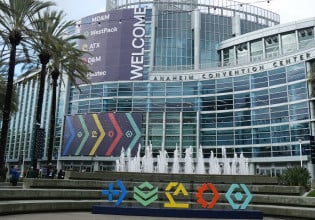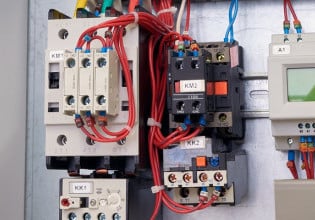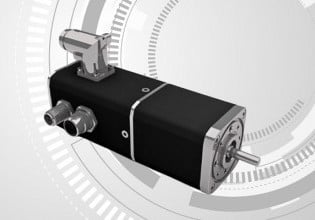BMW Joins Automotive Manufacturers in Utilizing Digital Twin Technology in Automotive Sector
BMW and NVIDIA combine their respective knowledge and expertise to transform vehicle research and development through virtual digital planning.
Automotive manufacturer, BMW, and inventor of the general processing unit (GPU), NVIDIA, recently announced their entry into a partnership. BMW intends to use NVIDIA’s virtual, digital tool for factory planning, Omniverse. BMW aims to use the multi-GPU real-time simulation and collaboration platform for its research and development (R&D) phase for new cars.
BMW believes that the capabilities of the Omniverse platform will enable the automotive manufacturer to plan processes with greater speed and efficiency.

NVIDIA digital twinning Omniverse kit. Image used courtesy of NVIDIA
During R&D, changes and modifications to product designs can be necessary and are usually commonplace. In the physical realm of R&D, costs can be incurred from sourcing more material to create a new prototype of the desired end-product, and downtime needed for adapting a production line to meet new requirements can add to these costs. Taking R&D and moving it into the virtual arena of digital twinning can save on time and costs.
What is a Digital Twin?
A digital twin is a computer-simulated or virtual copy of a physical entity. Similar to computer games, a virtual copy of a person, place, or thing can be created to emulate aspects of the physical world as we know it. In manufacturing, digital twinning can be used to create digital twins of certain machinery, processes, products, assets, or the supply chain so that modifications, repairs, thorough planning, and maintenance can be carried out with minimal downtime. This, in turn, keeps production on track and supports business mobility. Using a digital twin can optimize the quality of products, improve performance, and production.
It can take several years to design and launch a new car model. A digital twin can integrate data from previous model designs with the new concept in their digital formats. Communication between product designers, end customers, and other stakeholders can also be enhanced. During product testing, there is no need to wait for performance data collected during vehicle trials to define its performance and quality.
Automotive manufacturers use digital twinning to simulate changes in schedules affected by the generation of a new car model. Process control and efficient resource management can minimize disruptions and optimize manufacturing capacity. Manufacturers also use digital twinning to deploy workforce training and guide critical tasks (component design and product assembly).
NVIDIA’s Omniverse
NVIDIA’s Omniverse platform is comprised of five key components:
- Nucleus
- Connect
- Kit
- Simulation
- RTX Renderer
Omniverse Nucleus offers services for client applications and microservices to share and alter representations of virtual worlds. Customers can publish modifications to digital assets or their virtual worlds to the Nucleus Database (ND) or subscribe to their changes.
Industry professionals can utilize the Omniverse Launchers to install Omniverse Connectors. Connectors allow users to bring in applications like Maya, Unity, Rhino, and other digital command control (DCC) applications to contribute to an Omniverse project. The Omniverse Connect Library allows users to connect to the Nucleus DB and publish changes made to scenes that represent physical assets virtually.
Users can also subscribe to individual assets and full worlds. Universal Scene Description (USD) is a publicly available software developed by Pixar that allows for the interchange and augmentation of various assets. The assets can be stitched together or organized to create virtual sets, scenes, and shots. Pixar’s USD software stands at the heart of NVIDIA’s Omniverse for virtual world creation.

Systems engineers and developers can collaborate and create a virtual world for vehicle development and assembly through NVIDIA’s Omniverse. Image used courtesy of BMW
The Omniverse Kit is a toolkit and platform for the development and creation of Omniverse applications and microservices. Through the kit, simulation set-up can be edited, started, stopped, and adjusted via existing parameters.
The final core element of NVIDIA’s Omniverse is the RTX Renderer, where users can visualize and render their worlds. For more information on the Omniverse platform and an in-depth look at its key components, you can visit this repository.
NVIDIA in Automotive
NVIDIA began its journey in the automotive arena by developing GPUs to power in-car digital displays but has since forged a path in developing comprehensive vehicle computer systems. The company’s DRIVE platform and DRIVE Constellation data-center-based simulator allow for various vehicle functions to be run and autonomous vehicle testing to be conducted before being deployed safely on the road.
NVIDIA’s Omniverse is set to open up a new era of automotive manufacturing ingenuity. In a recent news release, BMW AG Board Member for Production, Milan Nedeljković, said: “Together we’re about to make a huge leap forward and open up completely new perspectives in the field of virtual, digital planning. In the future, a virtual representation of our production network will allow us to realize an innovative, integrated approach to our planning processes. Omniverse greatly enhances the precision, speed, and consequently the efficiency of our planning processes.”






